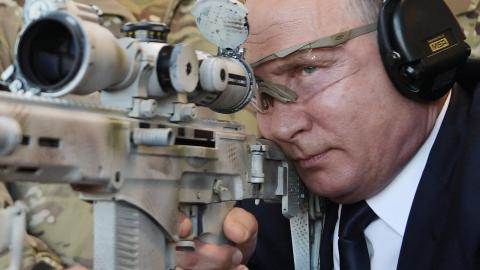In the wee hours of Sunday, May 12 a fire broke out at the Marywilska 44 shopping center, one of Poland’s largest. The conflagration ultimately destroyed 80% of the complex, which housed 1,400 shops and outlets.
This week, Prime Minister Donald Tusk stated that it is “quite likely – that the Russian services had something to do with the Marywilska fire.”
If true, the loss of a Polish shopping center by means of Russian arson would be shocking on its own. When viewed as one pixel in a larger picture of a sustained sabotage campaign against Western targets, the scale of the problem comes into focus.
After the fire, Poland arrested and indicted nine Russians alleged to have been involved in “beatings, arson and attempted arson,” including foiled plots to commit arson at a paint factory in the Polish city of Wroclaw and plans to set an Ikea in Lithuania ablaze.
Russia’s Shadow War Against the West Is No Joke
Estonia’s Prime Minister Kaja Kallas stated this week that likely ongoing sabotage operations are part of a Russian “shadow war” being actively waged against the West. Estonia would know having arrested ten people believed to have committed acts of sabotage on behalf of Russia in February.
As NATO advances towards the July summit, it’s become clear that more comprehensive discussions on addressing the Russian sabotage campaign must take place. The problem has been around for at least a decade, the pace of attacks however seems to have dramatically quickened.
Some of the earliest identified acts of Russian sabotage occurred in 2014 at ammunition depots in the Czech Republic killing two and causing $42.5 million in damage. In April, Czechia police published the results their decade long investigation concluding, “The police authority considers it proven that the explosions of the two warehouses in Vrbětice were carried out by members of the Russian military intelligence.”
Not long after, in 2015, Russia is believed to have set off explosions and fires at Bulgaria’s largest armaments factory. More recently in 2022 and 2023, Russia is thought to have once again targeted the warehouses of Bulgarian defense manufacturers. Bulgaria has played a crucial role in supplying ammunition and shells to Ukrainian forces, especially in the early stages of the war.
Closer to home, last month, a fire broke out at the Scranton Army ammunition plant in Pennsylvania which produces steel tubes for 155mm and 105mm artillery rounds amongst other munitions. Just two days later explosions occurred at a BAE Systems munitions plant in the United Kingdom.
Investigations into both these incidents remain ongoing; either, however, would fit the Russian modus operandi.
Considering recent trends, one could also be forgiven for looking askance at the multiple fires which broke out in just one week at Denmark’s Novo Nordisk. The company, better known as the maker of the diabetes and weight loss drug Ozempic, also happens to be Europe’s most valuable.
Even putting these incidents aside, there are plenty of proven reasons to be suspicious. Indeed, the day after the BAE plant explosion, German authorities arrested two Russian-German would be saboteurs, believed to be plotting attacks against bases, including Grafenwoehr, where the Ukrainian forces are trained to operate the American Abrams tanks.
Weapons and training facilities aiding Ukrainian forces are frequent targets. Norwegian authorities recently noted an increase in the threat of sabotage against arms deliveries to Ukraine, alongside a resident threat to the Norwegian energy sector.
Energy is another favored target. Russia was certainly a party to the sabotage of the Baltic Interconnector pipeline last October. This week, construction workers near Bellheim, Germany stumbled upon a cache of explosives and detonators intentionally buried nearby pipelines that form a portion of the NATO Pipeline System.
Transportation links are also in the crosshairs. The Czech transport Minister accused Russia last month of “trying to sabotage European railways,” with “thousands of attempts to weaken our systems.” A series of Swedish train derailments may be one example.
Another is October 2022 attacks on German rail operator Deutsche Bahn (DB). Investigators suspect Russia to be behind the sabotage of critical cables which brought rail traffic to a three-hour standstill. In the event of future conflict, perched atop Germany’s central location in Europe, DB would be one of the most important actors, moving NATO tanks, trucks, and troops.
Russia has also sought out more prosaic but no less critical targets. Take, for instance, hackers closely tied to the Kremlin who claimed credit for hacking municipal water systems in the U.S. and Poland as well as a water mill in France.
These incidents are very likely merely the tip of the iceberg and paint a picture of a sabotage spree gaining momentum.
Russia sees itself as at war with the West and believes that it can pummel with impunity, so long as its aggression stays under a certain threshold.
NATO leaders gathering this summer in Washington may want mark the alliances 75th anniversary and focus on bolstering additional support for Ukraine. They are quickly learning however, that Russia’s hybrid aggression, most vividly elucidated in a brazen ongoing sabotage spree, will be sharing center stage.



















